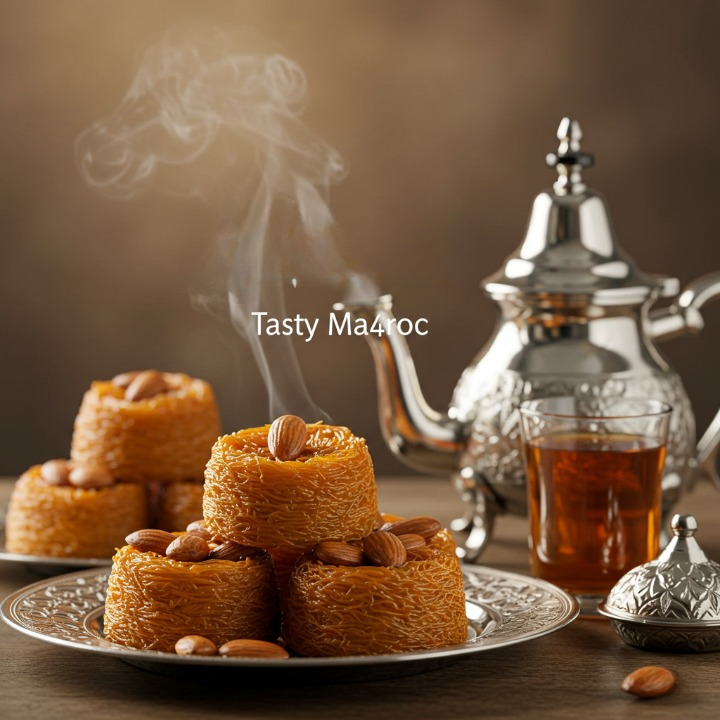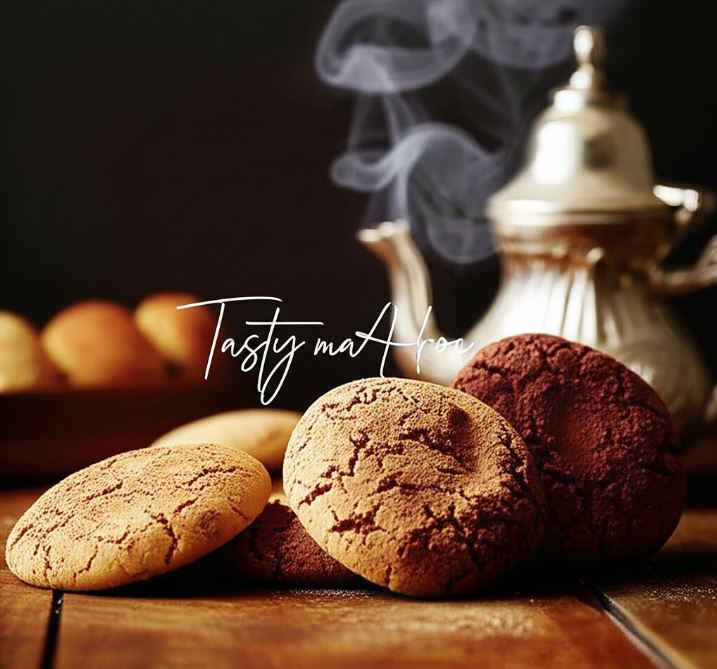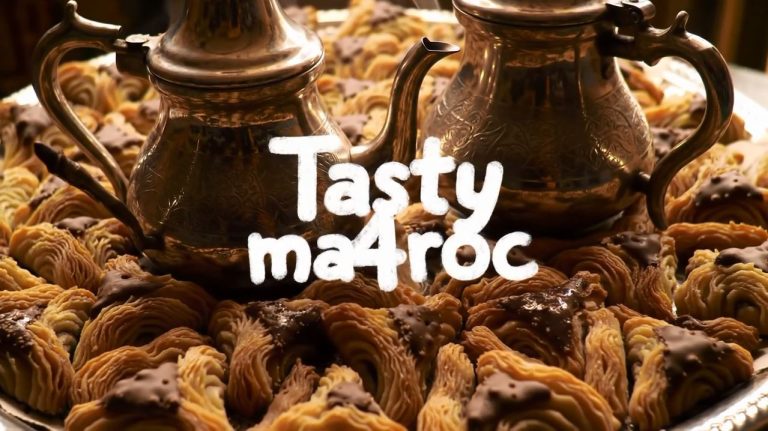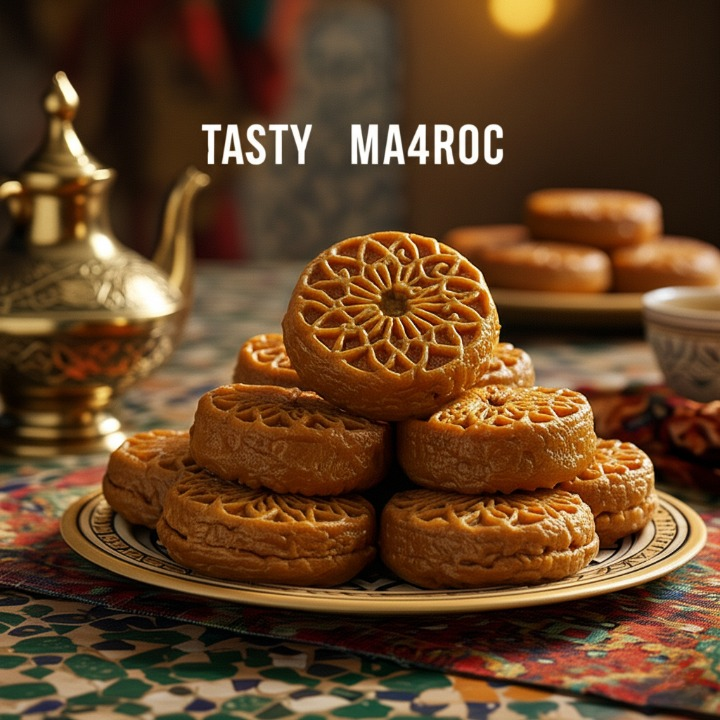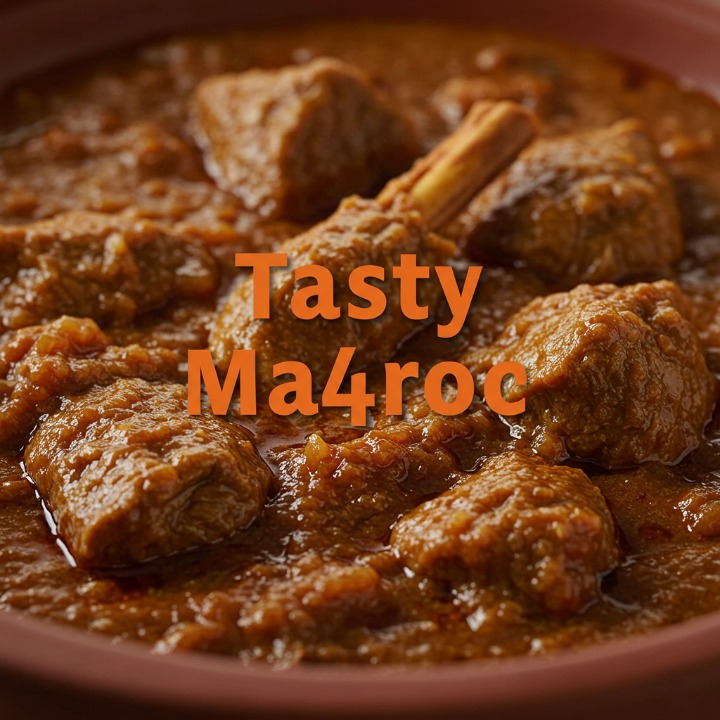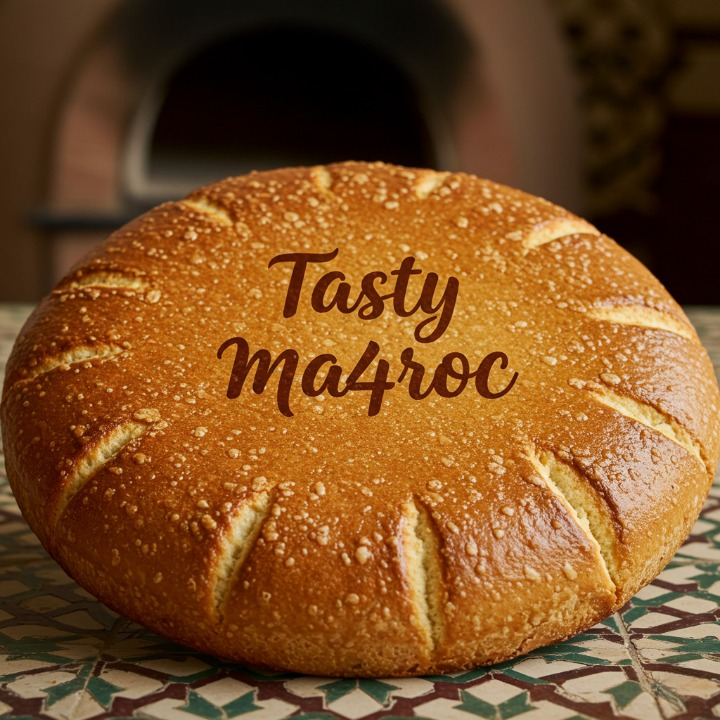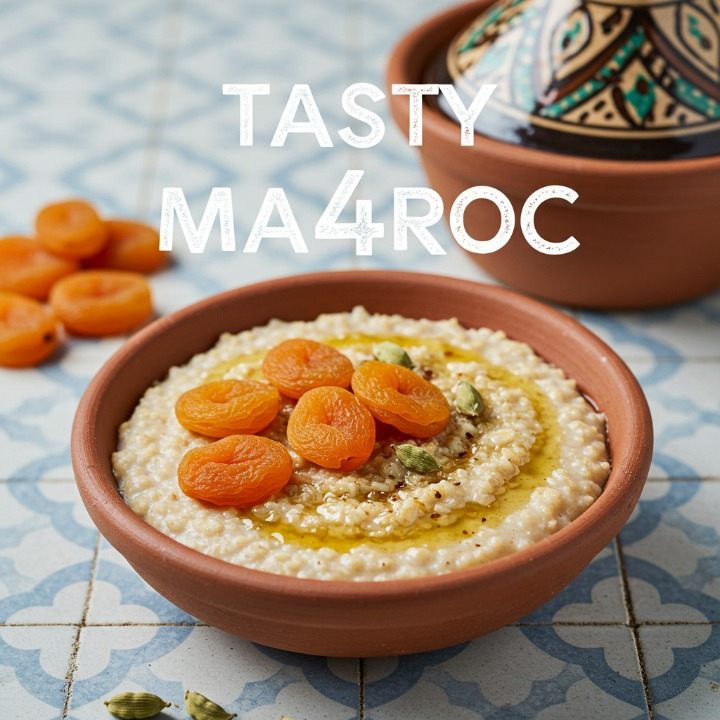Introduction
Elegant, fragrant, and rich with almond flavor, Kaab el Ghazal — or Gazelle Horns — is one of Morocco’s most iconic pastries. These crescent-shaped cookies are made with a delicate dough filled with almond paste, scented with orange blossom water, and shaped to resemble a gazelle’s horn.
Whether served during weddings, holidays, or with afternoon tea, Kaab el Ghazal symbolizes Moroccan hospitality and culinary heritage. In this article, you’ll discover the history, ingredients, preparation method, and expert tips to master this exquisite treat at home.
What Is Kaab el Ghazal?
Kaab el Ghazal (كعب الغزال) literally means “gazelle’s ankle” or “gazelle horn” due to its signature crescent shape. It’s a luxurious pastry that combines:
- A thin, buttery dough
- A rich almond paste filling
- The delicate aroma of orange blossom water
These cookies are rolled by hand and baked until just golden, creating a tender texture that melts in the mouth.
History and Cultural Significance
Kaab el Ghazal has long been associated with special occasions in Morocco. It’s a traditional delicacy served at:
- Weddings and engagement ceremonies
- Eid celebrations
- Family gatherings and formal tea service
Because of its fine ingredients (almonds, orange blossom water), it’s considered a symbol of care and refinement.
Ingredients You’ll Need
This recipe yields about 25 pieces.
For the almond filling:
- 250 g (2 cups) blanched almonds
- 125 g (½ cup) powdered sugar
- 1 tbsp butter (softened)
- 1–2 tbsp orange blossom water
- ½ tsp cinnamon (optional)
For the dough:
- 250 g (2 cups) all-purpose flour
- 2 tbsp melted butter
- 1 tbsp orange blossom water
- A pinch of salt
- About 100 ml (⅓ cup) warm water (adjust as needed)
Step-by-Step Instructions
🥣 Step 1: Prepare the Almond Paste
- Blanch and peel the almonds (if not already done).
- Grind the almonds with sugar into a fine paste using a food processor.
- Add softened butter, cinnamon (if using), and orange blossom water.
- Mix well until smooth and pliable.
- Form into small log shapes, about 5 cm (2 inches) long.
🍪 Step 2: Make the Dough
- In a mixing bowl, combine flour, salt, melted butter, and orange blossom water.
- Gradually add warm water and knead into a soft, smooth dough.
- Cover with a cloth and let it rest for 30 minutes.
🧑🍳 Step 3: Shape the Kaab el Ghazal
- Roll out the dough on a lightly floured surface — very thin (about 1–2 mm).
- Place an almond log near the edge of the dough.
- Fold the dough over the filling and shape into a crescent.
- Trim the excess dough around the crescent using a pastry cutter or knife.
- Gently pinch and curve the edges to enhance the horn shape.
- Repeat with the remaining filling and dough.
🔥 Step 4: Bake
- Place the cookies on a baking tray lined with parchment paper.
- Prick the top of each pastry with a fine needle or toothpick (to prevent puffing).
- Let rest uncovered for 30 minutes (optional, improves appearance).
- Bake in a preheated oven at 170°C (340°F) for 12–15 minutes, or until lightly golden on the bottom (not too brown!).
Serving Suggestions
Kaab el Ghazal is traditionally served:
- With Moroccan mint tea or Arabic coffee
- On festive trays with other sweets like ghriba, fekkas, and briouats
- As a refined dessert or gift during Ramadan, Eid, or weddings
Sprinkle with a little powdered sugar for a soft, elegant look — though this is optional.
Expert Tips for Perfect Results
- Roll dough very thinly — this ensures a tender, delicate bite.
- Let the shaped cookies rest before baking to avoid cracking.
- Use fresh, high-quality almonds for the best flavor and texture.
- Don’t overbake — Kaab el Ghazal should remain pale with just a light golden hue underneath.
Storage Instructions
- Store in an airtight container at room temperature for up to 1 week.
- For longer storage, refrigerate and bring to room temperature before serving.
- These cookies also freeze well — just thaw overnight and serve as usual.
Variations You Can Try
🌰 Walnut or Pistachio Filling
Substitute part or all of the almonds with other nuts for a unique twist.
🍊 Citrus Zest
Add lemon or orange zest to the almond paste for an aromatic lift.
🌼 Glazed Version
Some recipes include a honey glaze or powdered sugar finish after baking for extra sweetness.
Kaab el Ghazal vs. Western Pastries
| Feature | Kaab el Ghazal | Western Filled Cookies |
|---|---|---|
| Dough | Thin, soft, unsweetened | Often buttery or sugary |
| Filling | Almond paste, floral-scented | Chocolate, fruit, or jam |
| Shape | Crescent/horn | Varied (round, bar, etc.) |
| Sweetness | Subtle, elegant | Often much sweeter |
| Occasion | Festive, ceremonial | Everyday snack or dessert |
Frequently Asked Questions
Can I use store-bought almond paste?
Yes, but it may lack the authentic flavor. Homemade almond paste gives the best results.
My dough cracks while baking — why?
Either the dough is too dry or rolled too thick. Try resting it longer before baking.
Can I make these gluten-free?
You can try using gluten-free flour blends, but the texture may change.
Conclusion
Kaab el Ghazal is more than just a cookie — it’s an art form passed down through Moroccan generations. Its delicate almond filling, floral aroma, and elegant crescent shape make it a highlight of Moroccan patisserie.
By following this recipe and tips, you’ll be able to recreate this timeless treat in your own kitchen — whether for a holiday, special occasion, or simply to savor with a warm cup of tea.
✅ Meta Description (SEO)
Learn how to make authentic Moroccan Kaab el Ghazal (gazelle horns) with almond filling and orange blossom aroma. Step-by-step recipe + expert tips.

